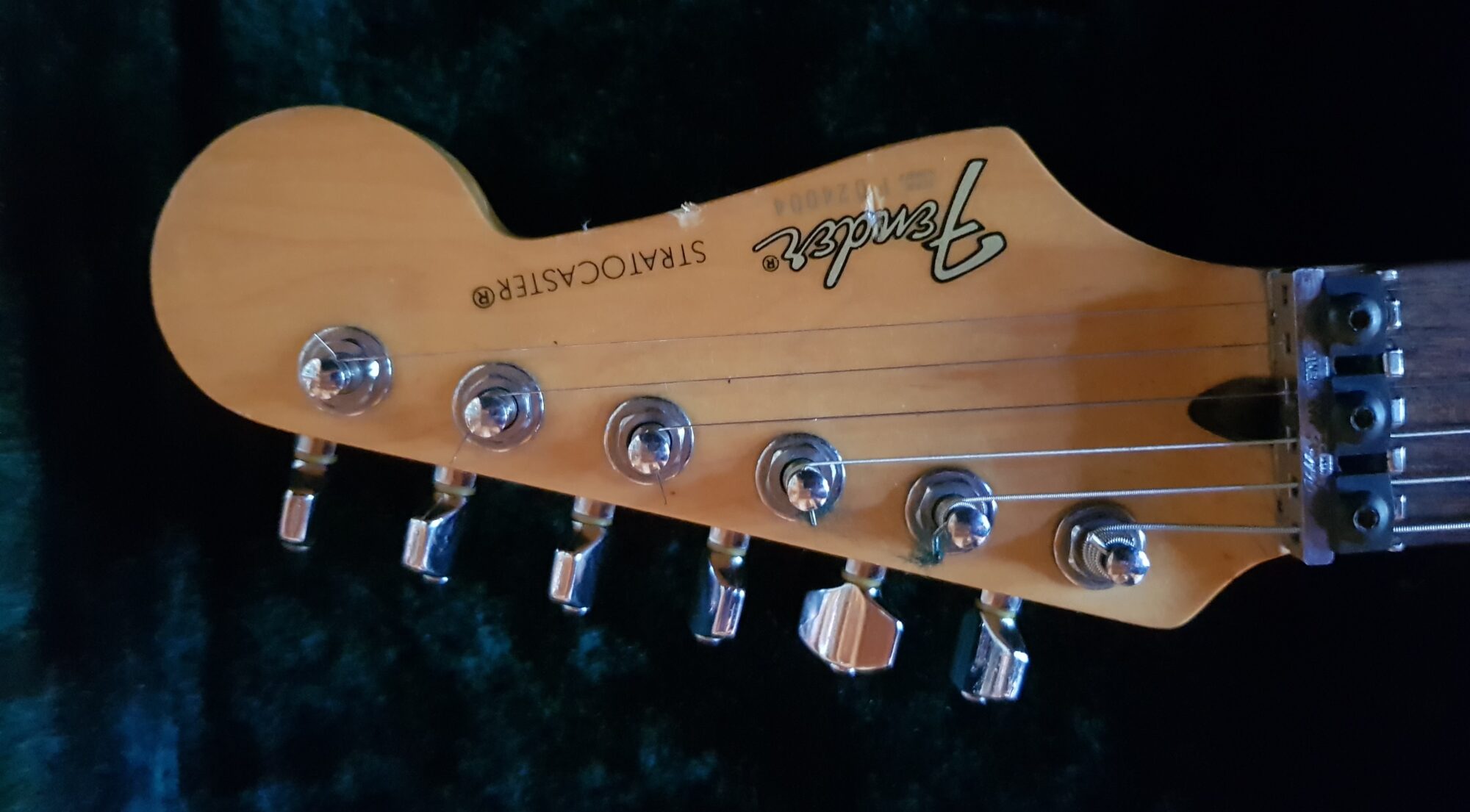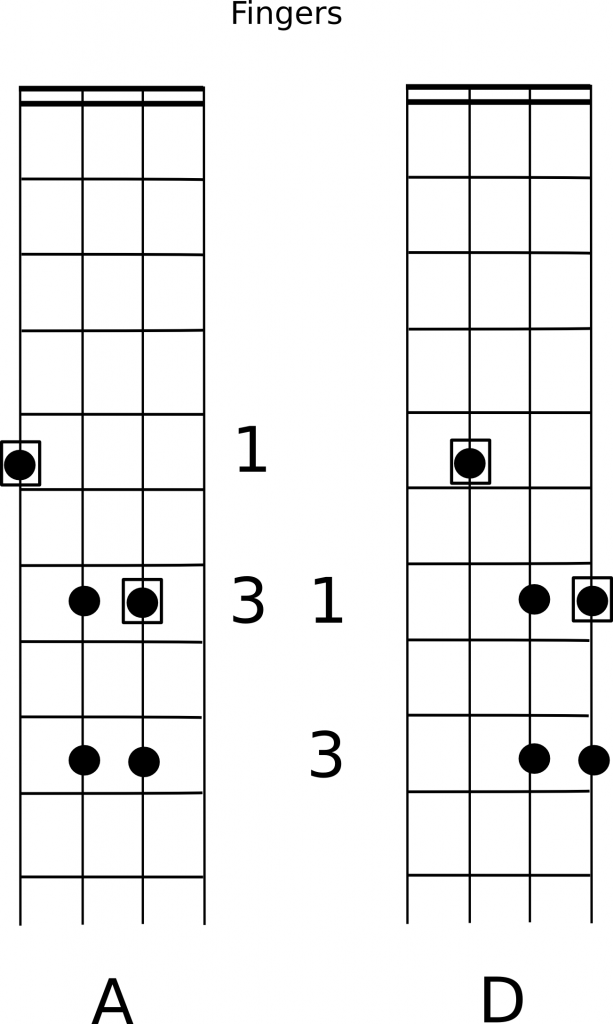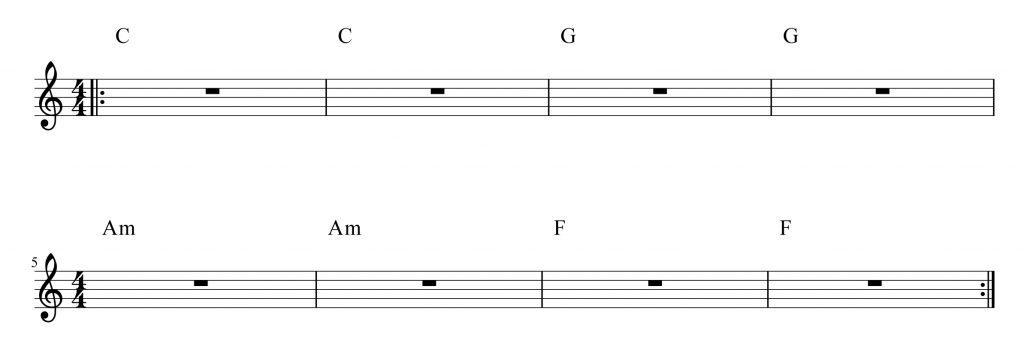Rob’s Guitar Method Book One is now available! It is an affordable method, with a recommended retail price of $14.95, but which I make available to students of the Guitar School for $10. This is significantly cheaper than many commercial learn to play guitar books on the market. The book is aimed at beginning players of all ages, and represents a structured approach to developing music reading skills, chord and strumming basics, and material suitable for improvisation.
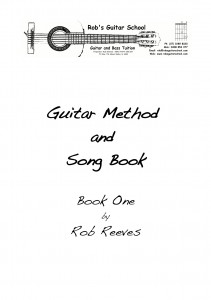
Students who successfully work through the method will gain proficiency in reading notes from the C major scale on the three treble strings in the first (open) position. Sharps are also introduced. This is supplemented by learning to recognize and play bass notes to go with common chords, on the 6th string (E,F,G), 5th string (A and C) and the 4th string (D). A number of progressively more demanding duets are included which help build skills in ensemble playing, and are useful in group classes or beginning ensembles. There are also pieces which are ideal for beginning explorations in improvisation.
A range of the most common chords and simple strumming styles are also developed, beginning with one finger chords, progressing to two finger chords, and developing to three and four finger chords. Finally, chords made with a half barre (Gm, A6) are introduced.
The method is not meant to be a self instruction manual, and contains no lengthy verbage which your teacher is going to tell you anyway, or more importantly show you. It is just the music, and the fingering diagrams you need to develop your playing in a structured way, with the aid of a teacher.
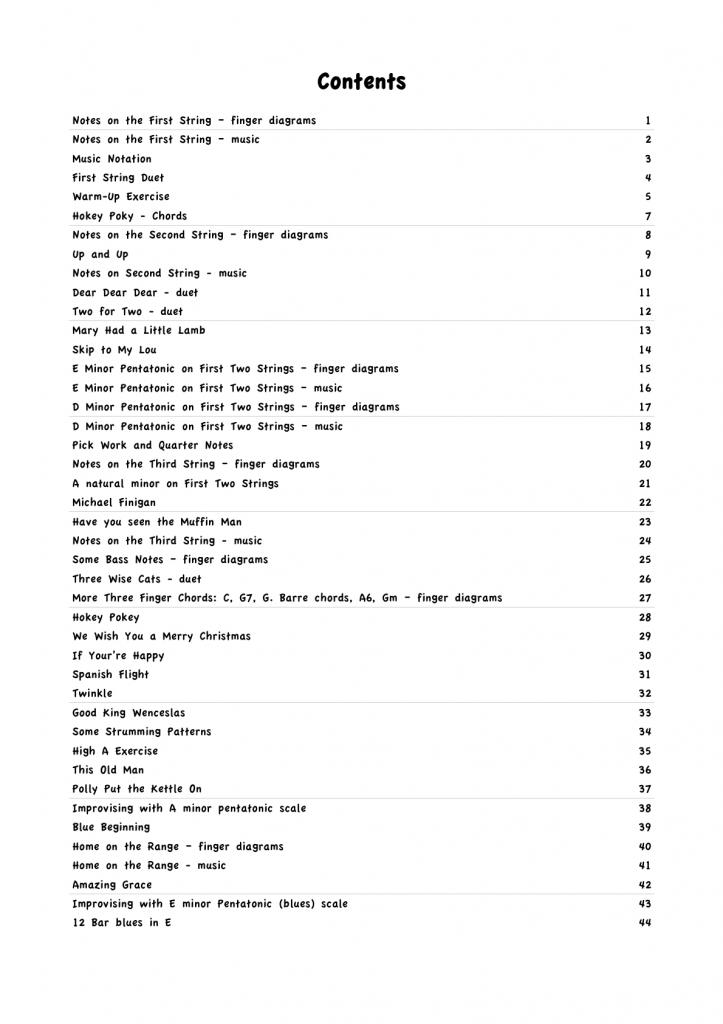
Email rob on rob@robsguitarschool.com with your purchase enquiries!
